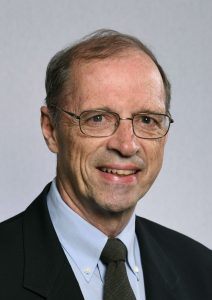Events
Plasmons, Excitons and Theory
November 29, 2016 at 4:30 pm/36-428
George Schatz
Northwestern University, Department of Chemistry

This talk focuses on new phenomena that have arisen from recently developed plasmonic/excitonic structures that have been made in the Odom and Mirkin groups. We begin with a discussion of the optical properties of 2D lattices of gold nanoparticles in the presence of laser dyes. Here show that the resulting plasmonic lasers can be described using a model that couples classical electrodynamics for the plasmonic particles with a four-level model of the excitons. Exciton transport that is mediated by plasmons is also described, and we show how laser properties are modified through the use of multiply periodic array structures that satisfy double diffraction conditions. In a second part of the talk, we examine 3D superlattices, which can either be fabricated as films or as rhombic dodecahedral (RD) crystal habits. We show that the films composed of layers of silver and gold particles exhibit surprising non-reciprocal behavior in which transmission depends on the direction that light crosses the layer. We also show that RD crystals show useful capabilities as micron-scale lenses and as Fabry-Perot cavities.
George C. Schatz is Charles E. and Emma H. Morrison Professor of Chemistry and of Chemical and Biological Engineering at Northwestern University. He received his undergraduate degree in chemistry at Clarkson University and a Ph. D at Caltech. He was a postdoc at MIT, and has been at Northwestern since 1976. Schatz has published three books and over 800 papers. Schatz is a member of the National Academy of Sciences, the American Academy of Arts and Sciences, the International Academy of Quantum Molecular Sciences, and he has been Editor-in-Chief of the Journal of Physical Chemistry since 2005. Recent awards include the Debye and Langmuir Awards of the ACS, the S F Boys-A Rahman Award of the Royal Society of Chemistry, the Hirschfelder Award of the University of Wisconsin. He is a Fellow of the APS, RSC, ACS and AAAS. Schatz is a theoretician who studies the optical, structural and thermal properties of nanomaterials, including plasmonics and excitonics, DNA and peptide nanostructures, and carbon-based materials, with applications in chemical and biological sensing, electronic and biological materials, high performance fibers, and solar energy. His past work has also been concerned with understanding the dynamics of chemical reactions in the gas phase and in gas-surface collisions.






